Columbia at 50 POLITICS: The Shifting Weight of Columbia Power: Part 5
This is the fifth part in a series of 12 monthly essays over the next year leading up to Columbia’s 50th birthday celebration next June. It ran first in The Business Monthly, circulating in Howard and Anne Arundel counties, and after that is being published here on MarylandReporter.com and by our partner website, Baltimore Post-Examiner. The copyright is maintained by the author and may not be republished in any form without his express written consent. Comments and corrections are welcome at the bottom.© Len Lazarick 2016
By Len Lazarick
As the election returns came in the night of Nov. 5, 1974, Howard County’s old guard was riding high. It looked like their campaign to “Beat the BLOC VOTE” from Columbia had worked. Republicans would get their first county executive, and car dealer Charlie Miller, who had approved the plans to build Columbia as an elected county commissioner, would get to stay on the County Council.
But as the results from Columbia precincts poured in later, elation turned to shock. The new town had voted overwhelmingly for the liberal slate of Democratic candidates, nine to one. People who had lived in Howard County for just a few years beat the old timers.
Three of the five new County Council members actually lived in Columbia, and one, Dick Anderson, was even a former general manager of Howard Research and Development Corp., the Rouse Co. division building the planned community. A fourth, Lloyd Knowles, had moved near Columbia because of the new town, and the new county executive, County Council Member Ed Cochran, a mild-mannered research chemist at the Johns Hopkins Applied Physics Lab where Knowles also worked, was seen as liberal, too. None of them were born or raised in Maryland.
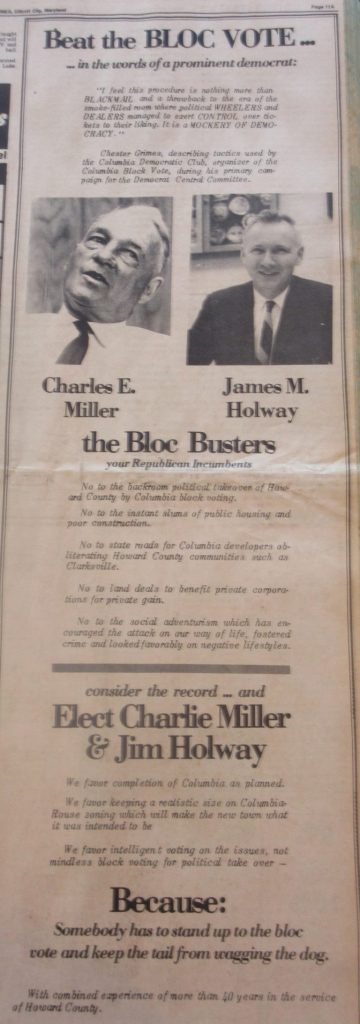
The old guard’s dire predictions of bloc voting may have been a campaign ploy to rile up their constituent base, but they also riled up the bulk of Columbians who had voted 8-1 for liberal Democrat George McGovern for president two years before. The rest of the county Democrats had voted in the primary for George Wallace, the segregationist who survived an assassination attempt in nearby Laurel the day before the primary.
“No to the backroom political takeover of Howard County by Columbia block voting,” blared the ads in the Howard County Times. “No to the instant slums of public housing and poor construction. … No to the social adventurism which has encouraged the attack on our way of life, fostered crime and looked favorably on negative lifestyles.”
No need to read between the lines to feel the hostility to what were seen as core Columbia values — an economically and racially diverse community. These values of Jim Rouse’s Columbia had attracted liberals from near and far, particularly its pledge of the racial integration uncommon in Maryland at the time. The schools in Howard County had been segregated until just 10 years before, and Cochran, serving on the school board, had helped desegregate them.
“The Republicans converted the campaign into a referendum issue of new versus old, which was very harmful,” Cochran told the Baltimore Sun‘s Mike Clark after the election. He promised a more unified county government.
The election wasn’t just about values; it was about sheer numbers. Because of Columbia, Howard County’s population had grown from 50,000 to 100,000. The people outside of Columbia simply got outvoted.
Key Decisions 10 Years Before
The biggest decisions that impacted that election were made 10 years before.
In 1962, Charlie Miller had been elected as a county commissioner on an anti-growth platform. Despite that, Rouse and company had persuaded him, the rest of the political establishment, and most importantly, their constituents, that a planned city of 100,000 was the best solution to the development pressure that was inevitable on a largely rural county between Baltimore and Washington suddenly accessible through the new interstate highways. The developers had spent months talking to any community group that would listen.
Attorney Jack Jones, who represented the Rouse Co. in many of the land deals, recalled in an interview with Rouse biographer Josh Olsen decades later: “So it was clear the development was going to come, and the question was do you want orderly development or do you want piecemeal and Levittowns?”
Two key points that had helped persuade the three commissioners who ran the county government and their constituents: Columbia was not going to be a burden on the county or raise their taxes. It would expand the commercial property tax base and be a net gain.
Rouse and the working group had long internal discussions about what form of government Columbia should have. At one point there were 12 different options on the table.
They included forming a municipality or special tax district; making the cost of community facilities part of the price of a house; going into partnership with the county government as the developer; and even the rather easily dismissed option of establishing a new county. At one point, they even discussed creating a separate school district just for Columbia, so that more money could be put into education.
All the options had drawbacks, principally political. The state legislature or the county commissioners would have to approve these new entities. Only Baltimore and Howard counties have none of the 153 municipalities in Maryland; Ellicott City, as it name implies, was once incorporated but dissolved in 1935.
The developer chose instead to continue to rely on the county and state for basic governmental services: for running the schools (after the developer gave them the land), for maintaining the roads (after the developer paid to have many of them built), for police and fire protection, and of course for the most important thing that the developer needed up front and would continue to need for a long period: zoning and control over what would be built where.
The Swiss-Cheese Problem
Most of the governmental options Rouse considered also had the Swiss-cheese problem. Columbia may have been 14,000 acres of mostly farmland, but there were holes in the cheese all over. These included residential developments such as Allview Estates, Guilford Downs and Sebring — “enclaves,” the planners called them — and even ongoing farm operations, like Sewell’s Orchard, and many smaller holes of one or several homes. These all came to be called “out-parcels.”
Governmental entities depend on having contiguous land mass, not a Swiss cheese. They also aren’t allowed to go into substantial debt without the tax base to support it.
Yet Rouse wanted to provide the new residents of Columbia with immediate amenities, like swimming pools, neighborhood and community centers and bike paths, through “pre-servicing.” This involved substantial debt.
The eventual decision was to take the existing concept of a homeowners association, generally used for small developments, and scale it up beyond all recognition into a huge, multi-faceted organization to be known officially as the Columbia Parks and Recreation Association, later shortened to Columbia Association, and these days generally compressed to CA.
This was not a governmental unit but a nonprofit community association that was established through perpetual covenants on the land and funded by a lien on every parcel of land in Columbia — essentially a property tax on residential and commercial real estate.
This would allow CA to go into debt, pre-servicing community and recreational facilities and financing them out of future revenues to be paid later on. This also kept the debt off the already debt-heavy books of Howard Research and Development Corp. This legal construct outside of government also could be controlled by the developer through its private board of directors.
“HRD felt that the ultimate fulfillment of the overall plan demanded a high degree of control over the new community during the 15-year development period,” said Wallace Hamilton, Rouse’s director of institutional planning, in a July 1964 memo.
But they also toyed with the problem of self-government and the advice from one member of the working group that “one of the requirements for a mentally healthy community was a sense of potency in the management of communal affairs.”
At the same time, Jim Rouse, mindful of problems another developer had had in Illinois, “pointed out that political power needed to be held by the developer in considerable measure during the development period,” Wallace explained. He quoted Rouse in a later session. “We’re going to have to make some tyrannical decisions around here.”
While the developer controlled CA through its board of directors until 1982, from the start it also added elected representatives from each village to serve on the board. Those elected representatives came to be called the Columbia Council. Now the CA board and the Columbia Council are one and the same.
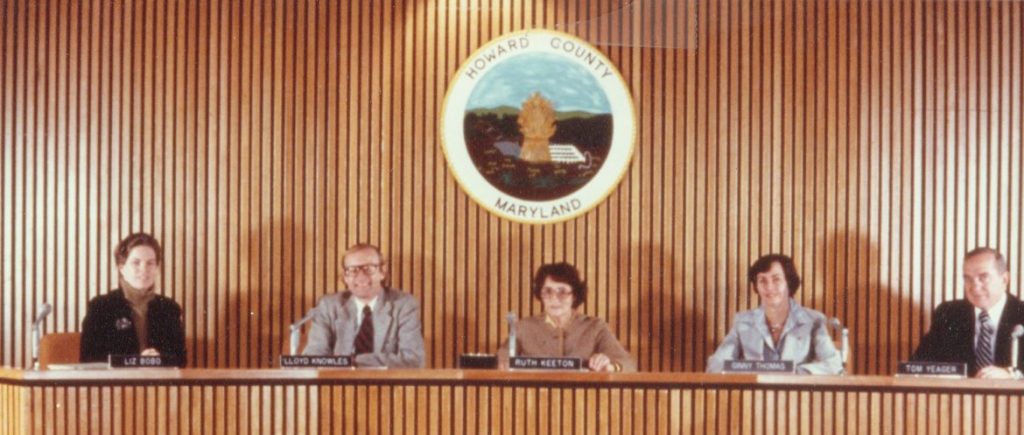
Real Political Power
The real political power over the major institutions in Columbia and Howard County was at the county level. That’s what Columbia Democrats grabbed in 1974.
In the early 1960s, Howard County might have been still largely rural and segregated, but it recognized that change and growth were coming. In 1965, voters mounted a successful petition drive to establish a charter commission to draft the county executive-county council form of government. This would replace the commissioners — governing by an elected committee — and create a strong, elected executive with a county council as a legislature, giving local officials greater control over county laws. The elected commissioners were dependent on the legislature and the three-member county delegation to the State House for changes in local laws, as Carroll County still is today.
County voters approved the move to charter government in 1968, electing Omar Jones, former principal of Howard High School, as its first county executive. A conservative Democrat — a common type then, but now on the endangered species list — Jones would win reelection in 1970 to a four-year term and then endorse Republican Howard Crist to succeed him in 1974, rather than a “bleeding-heart liberal” like Cochran.
Miller had not expected the influx of progressives that landed on his doorstep. The hot issues of the day now seem quaint: whether Howard County should have its own consumer protection agency and financial disclosure for county officials, among them.
There was no question that the new county executive and council members were listening more closely to Columbia residents than the more unsympathetic executive and council members they succeeded. Further heightening the antipathy between the new and the old residents had been the competition over the county’s first hospital. As initially conceived, the new Columbia Hospital would be open to only those who would also join the Columbia Medical Plan, a new-fangled health maintenance organization. Miller was backing the more traditional proposal from Lutheran Hospital to be built on his family’s Gray Rock Farm.
Senator Jim Clark
On a Sunday afternoon in August 1975, a few weeks after I joined the Columbia Flier, I was standing in the backyard of a townhome near Lake Kittamaqundi taking notes as a former governor of Georgia — a peanut farmer, no less — told a small crowd about his improbable run for president.
Jimmy Carter had just come from a private confab with some Washington journalists, including George Will, at the nearby farm of Sen. James Clark, Jr., one of Carter’s earliest supporters.
Come January 1976, I would visit the Maryland State House in Annapolis for the first time and get to know Jim Clark, probably the most important politician in Howard County at the time, aside from the county executive. He was a news source, he would become my political mentor and gradually, without me knowing it, he became my friend.
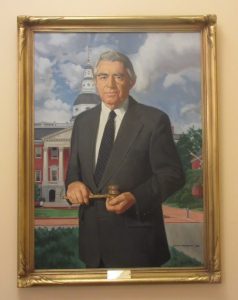
As a novice political reporter with a tiny, three-member county delegation to cover, I was fortunate that one of them was Clark. He was chairman of the Senate Finance Committee; he was state chairman of the campaign for the man who would become the next president of the United States, pitting Clark against Gov. Marvin Mandel and other machine pols; and in 1978, when his old state Senate chum Harry Hughes became governor, against all odds and the opposition of the Democratic Party establishment, Clark would become president of the Maryland Senate, then, as now, one of the three most powerful posts in the state.
It probably did Howard County less good than it might have if a more conniving politician had the job. He was considered weak by many of his peers, especially compared to the new, ambitious speaker of the House, Ben Cardin, then in his mid-30s.
Son of a banker and Circuit Court judge, Clark traced his roots to the Clarks of Clarksville, and on his mother’s side to the Ellicotts and relatives of Johns Hopkins.
Clark was a fiscal conservative, champion of the balanced budget amendment to the U.S. Constitution, but a progressive on other issues, including civil rights and the environment. Clark and his Senate ally, William James, crafted Maryland’s open space program, and Clark pioneered the farmland preservation program into which he placed his own farm.
When Jim Rouse approached Clark to tell him about the plans for Columbia to be developed just across Route 108 from his farm, Clark asked but two questions: “First, is this city going to be open to everyone, and second, can you do this without driving our taxes through the roof?”
Clark was no foe of Columbia, but he and his political allies were hardly as liberal as the county officials Columbia voters catapulted into office in 1974. In the next election, Clark backed former Del. J. Hugh Nichols, then a state budget official, against Cochran, who was damaged by a controversy over the placement of a landfill.

Born poor in Alabama, J. Hugh Nichols came to Howard County in 1957 to work for the National Security Agency in information systems. He took part in the petition drive for a Howard County charter, served on the charter commission and got elected to its first County Council when that charter passed in 1968. He was elected to the House of Delegates in 1970 after being appointed to fill a vacancy, and quickly became an appropriations subcommittee chairman. He was smart, ambitious and conservative, and willingly taught a novice State House reporter about the budget and General Assembly process.
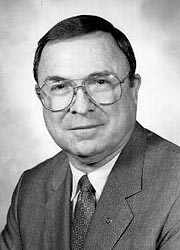
Nichols easily beat Cochran in the Democratic primary for county executive by more than 3,200 votes, getting 57% of the Democratic vote, and handily won the general election. Living in the Sebring neighborhood, he was surrounded by Columbia but he was not of Columbia. He represented a brake on the more liberal members of the County Council.
Pat Kennedy, who served as president of Columbia Association for more than 26 years, recalls that he had good relations with Cochran, but “Nichols had no interest” in helping with Columbia’s more urban needs, such as the bus system it was running. “He was paying attention to his base,” Kennedy said.
Nichols easily won re-election in 1982, but his career derailed at the end of his second term as he explored a run for governor as a Republican, switching parties in 1985. Facing the prospect of running against Democrat William Donald Schaefer, the popular Baltimore mayor, Nichols had trouble raising money and abandoned his quest for higher office.
He also abandoned Howard County five months before his term was up, resigning in July 1986 to take an economic development job with Middle South Utilities in New Orleans. The county’s chief administrative officer, William Ned Eakle, served out Nichols’ term. Nichols died in 2015 in Alabama.
Liz Bobo, Vernon Gray, Bob Kittleman
Nichols’ successor couldn’t have been more different. Liz Bobo was the first woman county executive in Maryland, and part of the liberal contingent on the County Council that had battled Nichols over the years.
Bobo, a Columbia Hills resident, had managed the campaign for the council slate that won in 1974.
Then just 30, she was a young mother who had grown up in Baltimore. “I was painfully shy,” said Bobo, as hard as that may be to believe for those who know her now. She remembers sitting in the corner of meetings in Columbia with other young moms. “The climate [Rouse] created here had huge impact on me.”
Cochran would appoint Bobo to the Board of Appeals in 1976, and then in 1977 she was appointed to the County Council for the seat left vacant when Dick Anderson left town for another job. Bobo’s appointment also meant that a county that may have never had a woman hold any office before 1974 would have a majority of women on the county council: Bobo, Ruth Keeton and Ginny Thomas.
In 1982, the county, whose population had been one-third slave when it was lopped off from Anne Arundel County in 1851, would get its first black elected official.
Vernon Gray, a Columbia resident and political science professor at Morgan State University, joined the council as part of a ticket that included Bobo, Keeton and Lloyd Knowles. Gray had been active in black political organizations, a Jimmy Carter delegate to the 1976 Democratic National Convention, and a governor’s appointee to the state redistricting advisory committee. He would be a fixture on the County Council for 20 years, and come to be seen as a moderate, pro-business, pro-development swing vote on the council. It was his long tenure that led to the successful push for a charter amendment limiting council members to three four-year terms.
Gray, who grew up in segregated Calvert County, was a master of insider politics, and in the 1990s gained statewide and national recognition as president first of the Maryland Association of Counties and then of the National Association of Counties.
Joining Gray on the political stage in 1982 was another figure who would stick around for decades and lead the resurgence of the Republican Party in both the county and the state. Taking advantage of Howard County’s doubled representation in Annapolis as its population ballooned, Bob Kittleman, a Westinghouse engineer who grew up in Iowa, became the first Republican Howard County ever sent to the state legislature.
Kittleman was not your typical Republican. Tall, lean and soft-spoken with libertarian leanings, Bob Kittleman had been active in the 1960s civil rights movement, participated in demonstrations to desegregate restaurants here, and became president of the county branch of the NAACP. His son Allan, who would follow his father’s lead into politics, recalled the many black visitors to the family’s Allview Estates home, making the neighbors nervous.
Even as a child, Allan Kittleman was politically aware, accompanying his father to political events. He recalled the “wild party” celebrating his father’s election victory at the Chatham Lounge on Route 40 on Nov. 2, 1982, even though the GOP had elected but one candidate out of many on the ballot.
Bob Kittleman, who had lost a run for county council in 1978, would serve in the Maryland General Assembly for another 22 years. He would become House minority whip and help to grow the GOP statewide from a small band of 17 members of the House of Delegates (12%) to 43 in 2003 (30%), picking up seats once held by conservative Democrats.
Pushing for Council Districts, Targeting Bobo
The continued dominance of the council by Columbia Democrats sparked a movement to elect the five members by district, rather than at large. After two failed attempts, a bipartisan effort to amend the charter passed easily with 58% of the vote in 1984, despite the opposition of some council members.
Election by councilmanic districts allowed Charlie Feaga, who had led the effort, to win a seat on the council in 1986 after two failed attempts. Feaga was a native countian, longtime dairy farmer and conservative stalwart of the Republican Party.
The new district lines had also put Democratic council veterans Ruth Keeton and Lloyd Knowles in the same West Columbia district. Knowles lost. Gray was reelected in what would become the “black” district, and Angela Beltram and Shane Pendergrass, two citizen activists, were added to the council. Pendergrass, an artist and art teacher by training, would wind up serving two terms, and 22 years later is in her sixth four-year term in the House of Delegates.
Bobo’s tenure as county executive was rocky, stirring intense opposition among business and development interests for her slow growth policies outside Columbia, insisting on protecting the environment and making sure the infrastructure could support new development. There was soon a target on her back.
One-time Columbia resident Joan Athen, former chair of the Howard County Chamber of Commerce and an elected official of the local and state GOP, remembered a group of people who met regularly “to get rid of Bobo” because of her opposition to the building of Route 100 and her perceived anti-development, anti-business posture.
The group recognized that, to replace Bobo, they had to have “somebody who would be acceptable by a broad group of people,” Athen said.
They settled on Chuck Ecker, the former deputy superintendent of schools, who had left the system in June 1989. Athen recalled it took “many more than one meeting” to persuade Ecker, then 61 and a registered Democrat, to make his first stab at politics and run against an incumbent Democratic county executive.
Affable and low-key, Ecker had grown up on a farm in Carroll County and lived in the Beaverbrook section next to Columbia. He had spent his entire career in public schools and was hardly what voters might think of as a politico.
I had met Ecker first covering the Howard County school board in 1975, and in the spring of 1990, Athen, who had been a friend since her unsuccessful race for delegate in 1978, asked me to discuss press relations for a candidate training session. (At the time, I was managing editor of Patuxent Publishing’s eight Baltimore County community newspapers and had no role in Howard County coverage.)
I wound up sitting next to Ecker at lunch that day, and he asked me what I thought his prospects were against Bobo. Relying on the conventional wisdom I still believe, in general, I told him that a campaign against an incumbent Democratic county executive, who I still thought was relatively popular, would be very difficult to win.
Ecker had the backing of developers and other business interests, and ran some masterful ads against Bobo. But “the night of the election, it wasn’t looking good,” Athen recalled. She had promised Ecker that if he lost, she would help him raise the $30,000 he had loaned his campaign.
“It was scary,” Athen said. The election was a squeaker. On election night, Ecker had won by only 244 votes. When absentee votes were counted, he had beaten Bobo by 450 votes, fewer than 1% of the ballots cast. In subsequent years, when I would run into Ecker, he would remind me of my gloomy forecast of his chances. If 226 people had switched sides, it would have been true.
“I told people in my campaign that I was in trouble,” Bobo said in a recent interview. “And they didn’t believe me.”
Across Maryland that year there had been a taxpayer revolt over rising property taxes. Voters kicked out four incumbent county executives, including Bobo.
“I loved doing that job,” Bobo said, recalling some of its high points, like achieving a triple-A bond rating for the county. The loss was “painful,” but “it’s one heck of a learning experience.”
One silver lining was her marriage to Lloyd Knowles. She believes that was unlikely to have happened if she had stayed focused on her career.
Despite the loss, her career was not over. Four years later, she was elected to the state House of Delegates in the west Columbia single-member district, serving there for 20 years. She fully embraced the “liberal” label and voted so independently at the State House that she never became part of the House leadership, as Shane Pendergrass, now vice-chair of the Health and Government Operations Committee, eventually did.
Republican Decade
Ecker, a fiscal conservative but one of the least partisan people imaginable, ushered in what would have to be called the Republican decade in Howard County.
Ecker’s personal penchant for fiscal austerity was a useful tool in the early 1990s. The post-Cold War recession hit worse in Maryland than in other states and slowed revenue growth. Ecker instituted the $125 yearly trash collection fee, and he wound up being stingier with the school system than expected.

But the recession did not slow the growth. Howard County’s population grew by almost a third (32%) from 1990 to 2000, increasing from 187,000 to 247,000, while the state’s population grew by slightly under 11%. With growth slowing in Columbia, most of the new residents lived outside the planned community.
In 1994, a third Republican was elected to the county council, Dennis Schrader, giving the GOP a majority on the county’s governing board for the first time in 30 years, along with Ecker, the Republican executive. Republican Del. Marty Madden won a senate seat, and more than half the state legislators representing the booming county were Republicans, including two of three senators.
“In 12 years, we went from zero to control of the government,” observed Allan Kittleman.
Some Republicans became victims of their party’s local success, as Kittleman, when county GOP chair, warned, “We’re going to start having [contested] primaries.”
When Charlie Feaga ran for council in 1982 and lost, he was the lone Republican seeking one of the five seats. In 1998, he ran for executive and faced a serious primary challenge from his seatmate Dennis Schrader, a Columbian and relative newcomer to the county who was a vice president of the University of Maryland hospital in Baltimore.
Schrader depicted himself as a slower growth advocate and won the Republican primary with 52% of the vote. Many of Feaga’s supporters felt that the farmer’s decades of work for the GOP should have been rewarded, and Schrader should have waited his turn.
In the 1980s, “we were more united because we were small,” said Allan Kittleman. Kittleman himself ran for County Council in Feaga’s western Howard District, running in the primary against fellow Republican Gail Bates, a special assistant to Ecker and former manager of Feaga’s campaigns.
Governing Bureaucrats
While there was infighting among Republicans, Democrats took a page from the Republican playbook, recruiting former Police Chief James Robey to run for executive.
Robey was much like Ecker, who had appointed him as chief. He was a career public servant, rising 30 years through the ranks of the police force after his graduation from Howard High School. He had never been involved in partisan politics, but had vast local government experience as a high-level police manager. He was as much a Howard County native as Feaga, lived in Ellicott City, and his law enforcement credentials played well with Republican voters.
Despite spending less money, Robey easily beat Schrader, running strongly in Columbia and well outside it. With the election of Democrat Guy Guzzone to Schrader’s southeast Howard County seat, the Howard County Council had three Columbia Democrats again. After just four years of GOP ascendancy, Democrats were back in control of county government.
Robey would keep the bureaucrats he had long worked with as part of the Ecker administration, running the government in a solid way without flair.
Gerrymandering — drawing legislative district lines for partisan advantage — is as old as the Republic, but it became more heavy handed across the country in the 21st century. In 2001 in Howard County, with the Democratic council majority in charge of drawing the lines and a Democratic executive, they pretty much guaranteed that a liberal Columbia — then about two-fifths of the county — would dominate three-fifths of the five council seats, as it continues to do today, leaving a strong Republican district in western Howard County and a swing district in Ellicott City and Elkridge.
In earlier decades, Columbia made up perhaps half the county’s population, but by the late 1990s, its proportion was on the decline and the issues were more partisan than geographic.
Despite its minimal high-rise density, Columbia is Howard County’s urban core and center of commerce. It has more minorities and more subsidized and low-cost housing. From 1980 to 2000, Howard County’s population more than doubled. For half these residents, Columbia was a fact of life when they arrived. Whether living in Columbia or outside it, people shopped at the mall or a village center; when in need, they went to Howard County General Hospital, where some of these new residents were born.
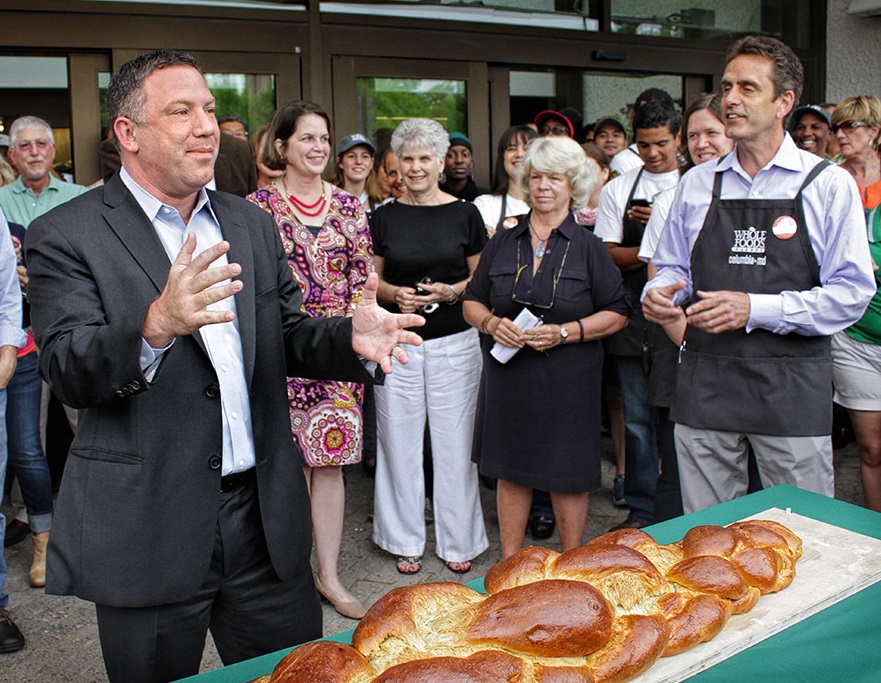
Born in Columbia
One of the new Columbia residents, born there in 1974, a year after the hospital opened, was the first child of Diana and Lou Ulman.
Ken Ulman grew up in the village of Dorsey’s Search and attended Centennial High School, then the elite high school in the county. In hindsight, Ulman’s rapid political trajectory seems clear.
He was part of student government at the University of Maryland, College Park, where he earned a bachelor’s degree in government and politics. While a student, he interned at the White House and worked on President Bill Clinton’s 1996 campaign and on Gov. Parris Glendening’s 1998 re-election. He got a Georgetown law degree, and worked in Gov. Glendening’s office as liaison to the Board of Public Works and secretary to the Cabinet.
When Mary Lorsung decided not to seek reelection to the County Council in 2002, he ran for her West Columbia seat. He was 28, and faced longtime Columbia resident Mary Kay Sigaty, then 52. He campaigned doggedly through the hot summer, outspent her five to one — $50,000 to $10,000 — and won by just 36 votes.
When fellow county council Democrat Guy Guzzone decided not to run for executive four years later, Ulman took the plunge, running against Republican County Council Member Chris Merdon, an information technology professional who was just a few years older.
That year, Republican Gov. Bob Ehrlich, who had carried Howard County in 2002, lost his reelection bid to Baltimore Mayor Martin O’Malley, who won the county, as did Ulman.
At 32, Ulman became the youngest county executive in Maryland and the first Columbia native to hold the job. Four of the five county council members were new, including his former foe, Mary Kay Sigaty, who took his council seat. An activist executive, he pushed a progressive agenda such as the county’s own Healthy Howard health care plan and a downtown Columbia plan.
Advertising agency owner Roger Caplan, who had “really admired” Ecker and helped him get elected in 1990, pitched in for Democrat Ulman.
“Ken is one of the brightest guys I ever met,” Caplan said in an interview this past summer. “He was exhilarating to work with,” exploding with ideas. “He had the best political instincts.”
Among them was keeping Robey’s team of department heads, such as Dick Story, who served as head of the county Economic Development Authority for three executives. For Story, Ecker was the best. “He was sly; he was shrewd.” But despite Ulman’s youth and lack of business experience, he was a fast learner and quickly understood the needs of business. “He got it,” Story said.
Sigaty saw him bring the values of Columbia to the executive office. “We have seen our county become a much kinder and gentler county,” Sigaty told a Democratic dinner in 2013.
But like Nichols and Ecker before him, Ulman brought higher ambitions to his second term, exploring a race for governor earlier and with more persistence and fundraising know-how than either of them. When it became clear that Lt. Gov. Anthony Brown had the edge to succeed O’Malley, he joined Brown as his running mate for lieutenant governor.
That seemed a sure thing until along came Larry Hogan, with his running mate Boyd Rutherford, an experienced government executive and longtime Columbia resident. Despite Ulman’s presence on the ticket, Hogan carried Howard County by 5,000 votes in 2014, twice the margin for Republican Allan Kittleman in his race for executive. Both major party candidates for lieutenant governor were lawyers who lived in Columbia.
“In any given year, it’s a purple county,” said Courtney Watson, the Democratic former county council member who lost the county executive race to Kittleman. “It depends on how lethargic is the turnout for Democrats. All things being equal, it’s a Democratic county.”
Things are not equal for those rare times when a Republican runs well for governor, as Hogan did in 2014, and as did Del. Ellen Sauerbrey, who, although she lost her bid for governor, also carried Howard County by 5,000 votes in 1994. She lost to Glendening statewide by 6,000 votes.
Watson and Kittleman did not have quite the same Columbia bona fides as Ulman, but they came close. Both grew up near Columbia, and attended Atholton High School, surrounded by Columbia. They played in Columbia, they shopped in Columbia, and they shared many Columbia values.
“We were proud of Columbia,” Watson said.
Kittleman is of course, the son of Bob Kittleman, the one-time civil rights leader. He succeeded his father in the state Senate in 2004 when the elder Kittleman died. Watson’s political pedigree is not as obvious. She grew up as Courtney Cochran, a daughter of Ed Cochran, the second county executive, elected with strong Columbia support.
The Governing Consensus
“I think Columbia has affected us in a very positive way,” Kittleman said in an interview last month. Because of Columbia, “we are a more inclusive and open and tolerant community.”
For evidence of this bipartisan community consensus, look no further than the recent swift reaction of the electeds of both parties condemning Democratic Sheriff Jim Fitzgerald. A report from the Howard County Office of Human Rights accused Fitzgerald of bullying and harassment of staff using racial and ethnic slurs. That is not who we are, said Republican Kittleman and his Democratic predecessors.
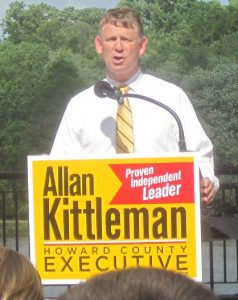
“People in Howard County want to see good government and not a lot of drama,” Watson said. “Our citizens do not tolerate [drama] well.” They believe in “making decisions for the common good.”
Kittleman, who shares his father’s libertarian streak, broke with his party on issues such a gay marriage, forcing him to give up his post as Senate minority leader. To get elected countywide, “you have to be more center right, you can’t be far right,” he said.
Yet the Kittleman-Watson contest also made clear the persistent split between Democratic Columbia and much of the rest of Howard County, particularly west of Route 29.
Watson carried most of the Columbia precincts easily, as well as many of the Ellicott City and Elkridge areas she represented on the council by smaller margins. Exclude Columbia precincts, and Kittleman would have won with a far greater majority than the 51% he got.
Another key part of the bipartisan community consensus is support for Howard County public schools, acknowledged as some of the best in Maryland and the country. The support is both moral and financial, from the best educated and most financially successful residents in Maryland and the country.
“Howard County has two key assets that set us apart from everywhere else,” said Sigaty. “The school system and Merriweather Post Pavilion.”
“The school system reflects the community,” said Sigaty, a former teacher and school board member. “It is the absolute belief that it is the most important thing we do.”
For evidence of that, look no further than the bipartisan coalition of legislators that has gone after the Board of Education and school superintendent for lack of attention to building problems, secretiveness and high-handed treatment of parents.
“The school system is what makes Howard County successful,” said Watson, also a former school board member. “It’s what leads Howard County’s quality of life.”
It’s also what leads Howard County taxes to be higher than those in some nearby counties where less money is spent on schools.
As for Merriweather and the revitalization of downtown Columbia to create the high density urban core Jim Rouse envisioned 50 years ago, Kittleman has taken up the cause where Ulman left off.
He proposed tax increment financing (TIF), floating county bonds for downtown infrastructure based on the additional tax revenue the new buildings will bring. Many have called it a “developer handout,” but Kittleman sees that as no more a handout than the original zoning the county gave the Rouse Co. for 14,000 acres of farmland.
“I’m glad Columbia never incorporated,” said state Sen. Gail Bates. “There would have been much more divisiveness.”
Next Month: Part 6: Education
Len Lazarick ([email protected]) has lived and worked in Columbia as a journalist for more than 40 years. He is currently the editor and publisher of MarylandReporter.com, a news website about state government and politics, and a political columnist for The Business Monthly.

MarylandReporter.com is a daily news website produced by journalists committed to making state government as open, transparent, accountable and responsive as possible – in deed, not just in promise. We believe the people who pay for this government are entitled to have their money spent in an efficient and effective way, and that they are entitled to keep as much of their hard-earned dollars as they possibly can.

